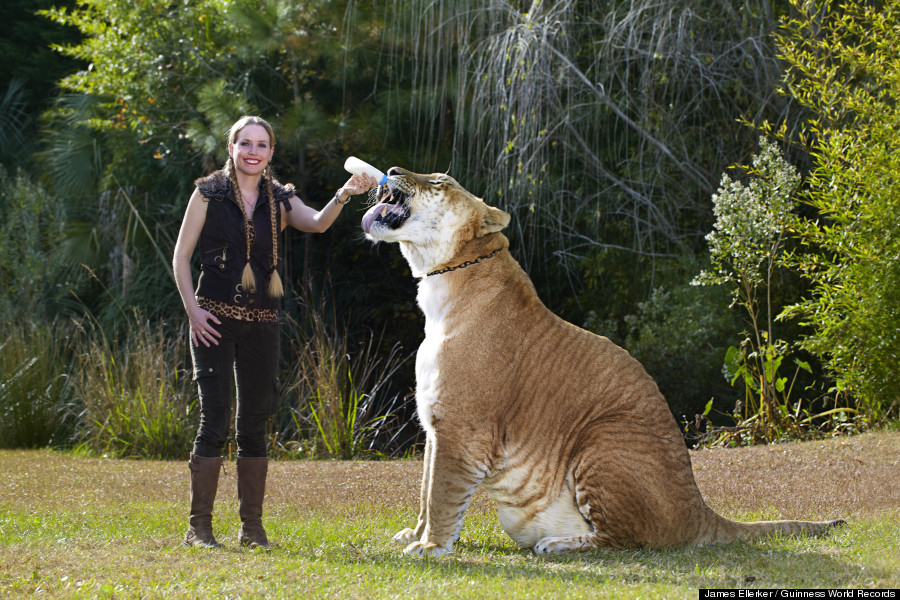If the Internet has taught us anything, it's that we love strange and adorable animals. Possibility one of the most reliable sources of such creatures is hybrids: we love discovering new, and sometimes fictional, animal creations. Although when we hear the term "hybrid,"
we often picture a car, it is used in biology to refer to an
organism that resulted from cross-breeding of (typically) two different
species. Hybrids are quite common in
plants, though today we are going to focus on animal hybrids (our apologies to our botany fans). There are many well-known types of hybrids in the animal kingdom,
including the liger (a lion/tiger), mule (a horse/donkey), and zonkey
(zebra/donkey). For most hybrids, the
physical appearance and name of the animal depends on the sex of each parent
species: the difference between a tiglon and a liger depends on species of the
mother and father. For example, a liger is a cross between a male lion and a
female tiger, while a tiglon is a cross between a female lion and a male
tiger.


Hercules the liger
Many hybrids occur in nature, especially amongst
plants. Some, however, only occur when
two species are artificially housed together in captivity.
Even when housed together, though, some animals simply can't breed to form hybrids (even if they seem
closely related). The resulting fetus
may not be carried to term or, even if it is, it may be nonviable. This means the
hybrid itself cannot breed--this is the case with mules. The only way to get new mules is by
crossbreeding horses and donkeys.
Hybrids between two species in captivity are quite often
unexpected. For example, Ippo the zonkey
was born this year after his father (an amorous zebra) jumped the fence into an enclosure
holding a female Amiata donkey. The
owners were quite surprised when, a year later, their donkey gave birth to a
striped foal!
Ippo the zonkey foal
For such a hybrid to occur between two historically
geographically separated species is quite incredible. In the case of elephants, it was long
believed that African and Asian elephants would be unable to produce a hybrid
that could be carried to term and born successfully. Asian and African elephants have been
separate species for almost 7 million years; Asian elephants are actually
more closely related to the now-extinct wooly mammoth than to African
elephants. Thus, African and Asian
elephants have been kept in the same enclosures in some zoos and parks, with
little concern for any inter-breeding that may occur. Even if a male elephant were to mate with a
female, it was not believed that any offspring would result.
However, in 1978, keepers at the Chester Zoo in the UK were shocked to discover that Sheba, their female Asian elephant, was pregnant. The only possible paternal candidate was Jumbolina (also called Bubbles), a male African elephant. Much to the keepers' amazement, Sheba carried her calf succesfully, and gave birth on November 7, 1978. He was named Motty, after George Mottershead, the founder of the Chester Zoo who had recently passed away.
Motty with his mother
Motty was undersized and unable to stand soon after his birth, which
suggested that he was born prematurely. However, he appeared to do well after hourly feedings of glucose supplementing his mother's milk. Amazingly,
Motty sported a beautiful mix Asian and African physical features. He had large ears, shaped like those of a
typical African elephant. His legs were
long and slim like an African elephant, and he had a large single dome on his
head. However, he also had two smaller
domes behind the large one, like an Asian elephant. Motty had Asian elephant features in other
ways: a single "finger" on the end of his trunk, and the typical
five-four front-back foot toe nail pattern.
Photograph demonstrating the mixed Asian and African elephant traits
Sadly, a week after his birth, Motty developed an umbilical
cord infection, and rapidly fell ill.
Two days after starting treatment, Motty passed away from
necrotic-enterocolitis and E. coli. He was exactly two weeks old.
It's unclear why Motty got so sick so quickly--most likely,
premature care for elephants at that time was not as effective as it
is now. Perhaps, if Motty had been born in
2014, he would have been successfully treated and survived. Unfortunately, we will never know if he was
viable and able to reproduce himself.
Although a sad story, Motty is a remarkable example of
cross-breeding. Although African and
Asian elephants are not only different species, but also belong to different
genera, they were able to interbreed. Such a hybrid may never occur again, and
there's no reason for it to, but it is certainly a remarkable example of nature defying
our expectations.
References
http://news.bbc.co.uk/2/hi/sci/tech/6913934.stm
http://www.huffingtonpost.com/2013/09/13/hercules-liger-worlds-largest-cat-photos_n_3920158.html
http://www.huffingtonpost.com/2013/09/13/hercules-liger-worlds-largest-cat-photos_n_3920158.html



Why don't they artificially inseminate Asian and African elephant
ReplyDelete